
Vesper
Duration: 12 weeks
Intro
Sleeplessness has become commonplace in modern society and those most affected by it are children with Autism spectrum disorder (ASD). Vesper is a sensory pillow that plays into the sensitivity that people with autism often have and creates a relaxing, sleep inducing experience for the user.
The pillow is partnered with an app that allows adjustments to the sound, vibration and temperature of the pillow, allowing the parents to tailor it to their child’s needs.
Research
Problem Statement
Screen-based device use is on the rise especially in children who are the most vulnerable to the negative effects caused by this.
This impacts sleep and the group that suffers the most are children with Autism who already have sleeping issues. Sleep is critical to a persons’ health and especially a child’s development.
My goal was to create a product to improve sleep in children with autism and discourage screen-based device use.
Child using tablet instead of sleeping
Users and audience
The audience are families with children with High Functioning Autism, that have difficulty with their child/ren sleeping. The key users are the children who will be directly interacting with the pillow and parents who will be interacting with the Vesper Parent App and setting up Vesper Pillow.
Roles and responsibilities
This was a solo project during my second semester of my final year in college. I have worked on many projects in a team and prefer to work in a small team than alone however I wanted to show variety in my portfolio.
Scope and constraints
There were difficulties finding users to interview and test prototypes, therefore most of the tests were done with my little brother who has Autism Spectrum Disorder (ASD).
COVID-19 made testing and prototyping even more difficult as I couldn’t reach families and people to test with, so I improvised with remote methods of testing.
Process
When and Why People Use Devices
By interviewing and monitoring participants’ devices usage I identified that most recreational screen-time occurs in the bedroom during evening to night hours and leads impaired sleep.
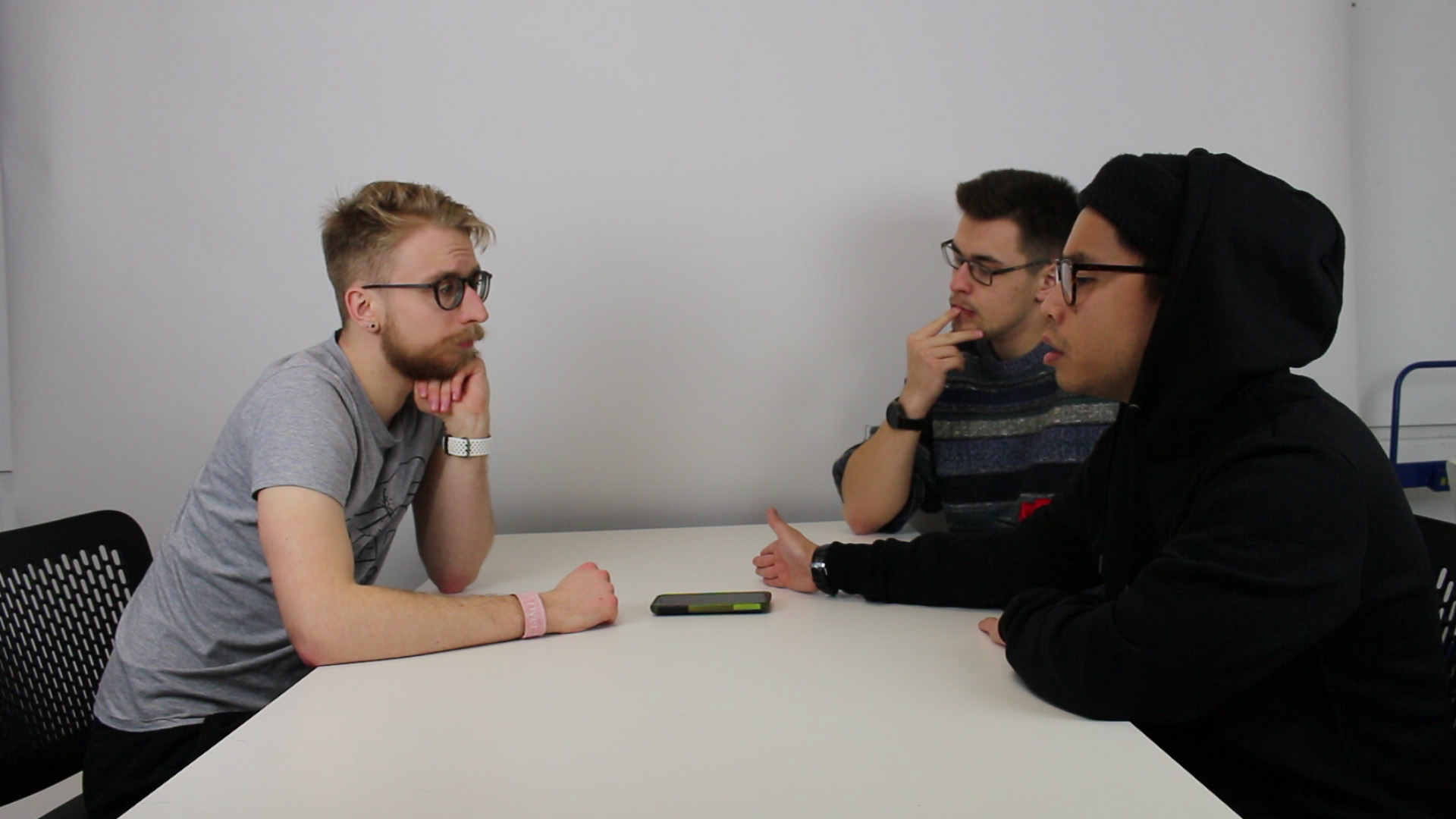
Interviewing people about their bedtime behaviours
Most Vulnerable people Facing Issues of Device Use
Children are a growing demographic in screen-based devices, and children with ASD are twice as likely to suffer from sleeping issues. I recognised the situation in my own family and investigated further.
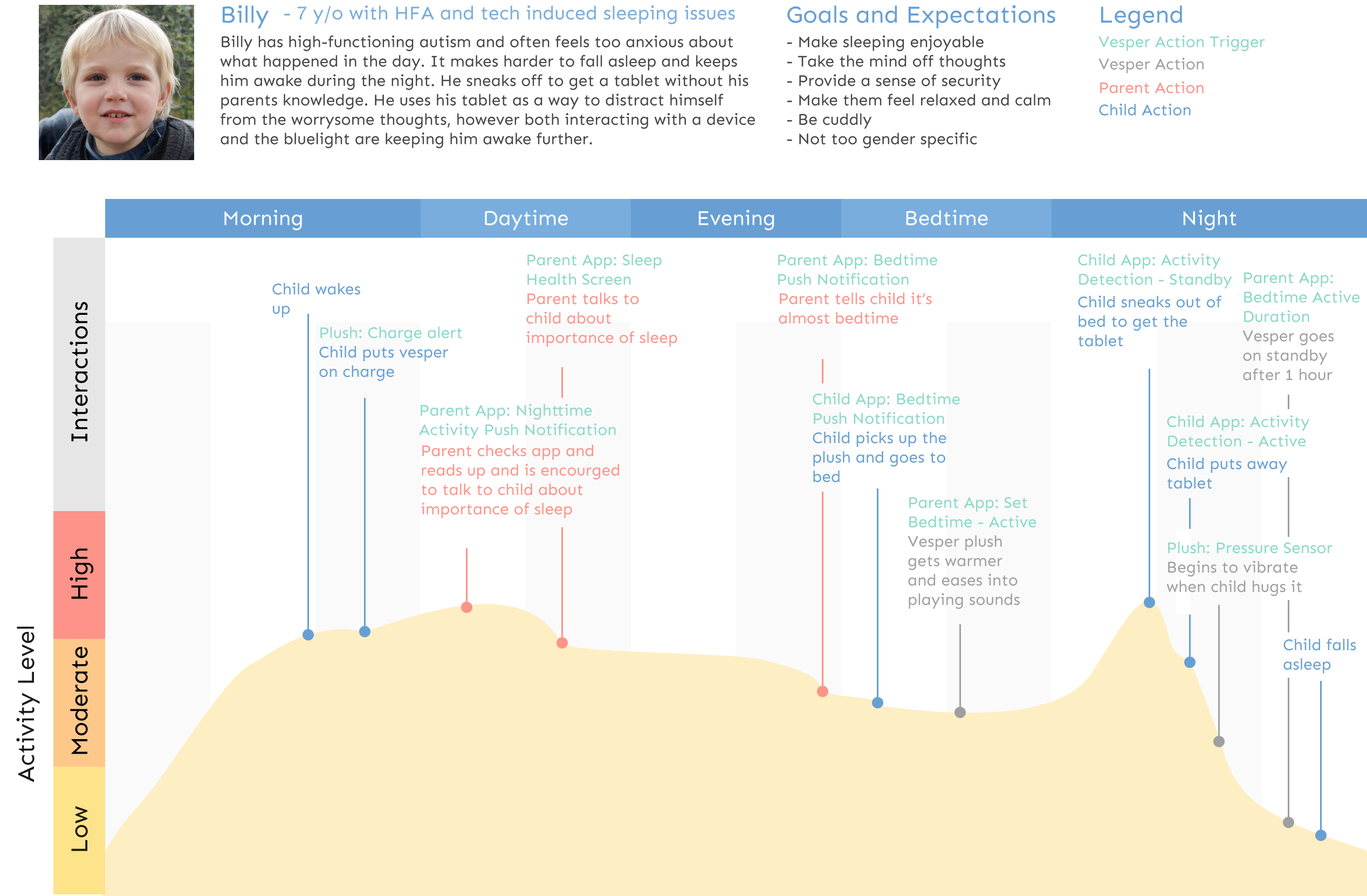
Child’s journey with Vesper
What Helps Children Fall Asleep
Co-created with my brother 12 y/o and sister 7 y/o to identify what helps them fall asleep. Soothing music turned out to be one of the things that help my little brother with ASD.
The upside of High Sensitivity
Sensory products can help reduce feelings of anxiety and promote sleep in individuals with ASD.
Tested sensory aspects during bedtime for improvements in sleep
I created a prototype utilising what I learned first hand and what I read online. A rolled up a heating blanket into a pillow shape and put my phone inside to play cracking fire sound.

Image of second test. Waterbottle, bluetooth speaker and aromas inside a cushion
Preliminary results and taking bias into account
Took into account that feedback from family will be heavily biases. He loved the prototyped and claimed it he really enjoyed it. Keeping in mind that his feedback is heavily biased, I carefully kept going and developing it further.
Exploring relaxing touch and textiles without over-stimulation
Created a swatch of fabrics and brought it to the two children to identify which material would be the best.
Later I Interviewed Maureen Laverty who created textiles for people with autism where I learned patterns can be stimulating and keep them awake further, therefore I went with a soft unpatterned cover for the casing.

Fabric and pattern child 1 picked

Fabric child 2 picked
Exploring Most Comfortable Shapes to Users Remotely
Mocked up different shapes, sizes and ways of interacting with them, took photos of my interacting with them and sent them to the families as I was not able to bring it to them in person.
This was to identify what shape the product should have, everyone preferred the shape that most resembled an ordinary pillow. This would also allow the users to change the cover if they wish.
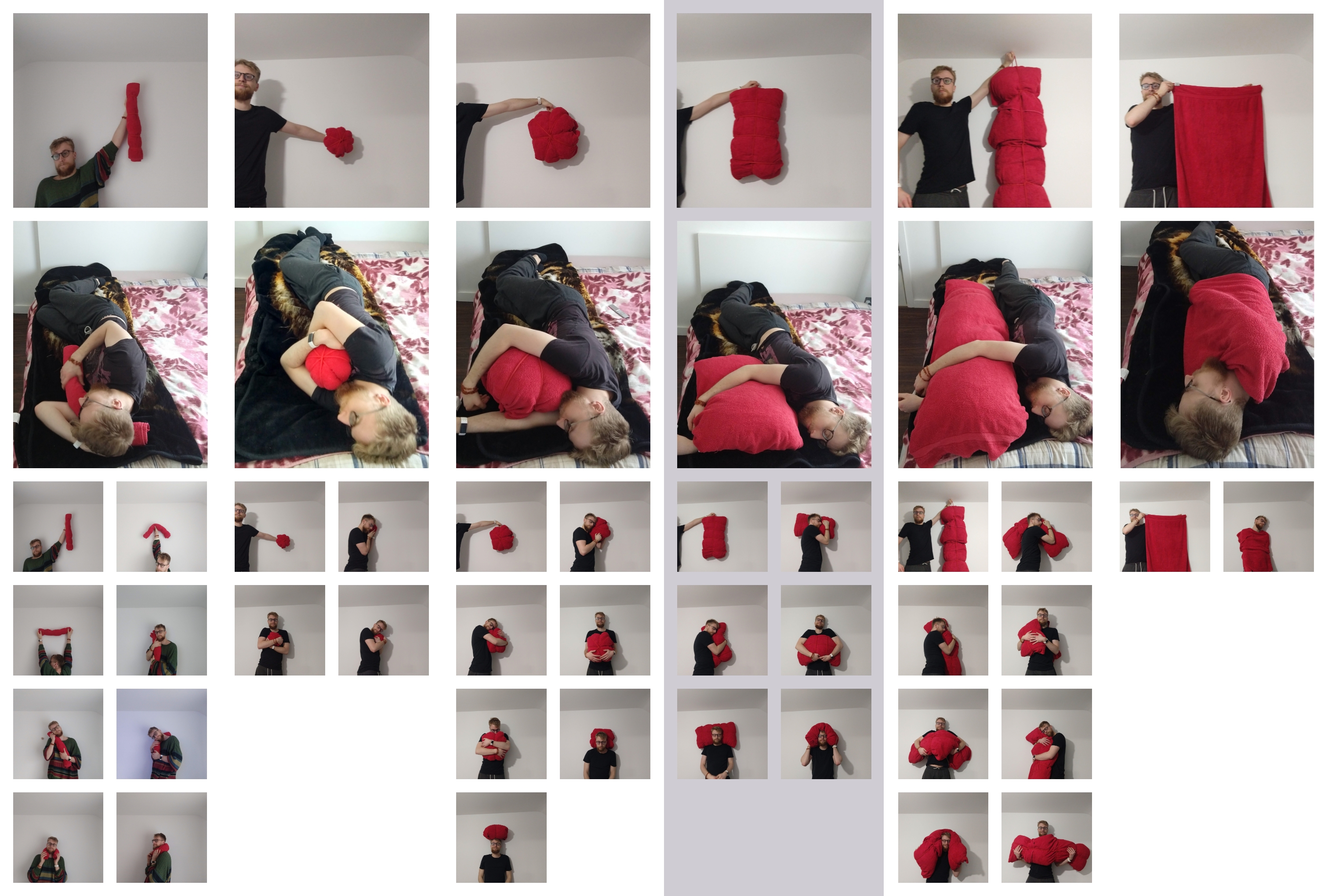
Exploring Vesper shape
Other Senses That Provide Comfort
Interviewing a family with a child with ASD showed me how physical pressure and weight can help with relaxation, a sensation that has been utilised in a market of weighted blankets.
This led me to create an inner layer of weighted pockets to give a sense of security for the child and respect for the product.

Sketches ideating Vesper Pillow composition
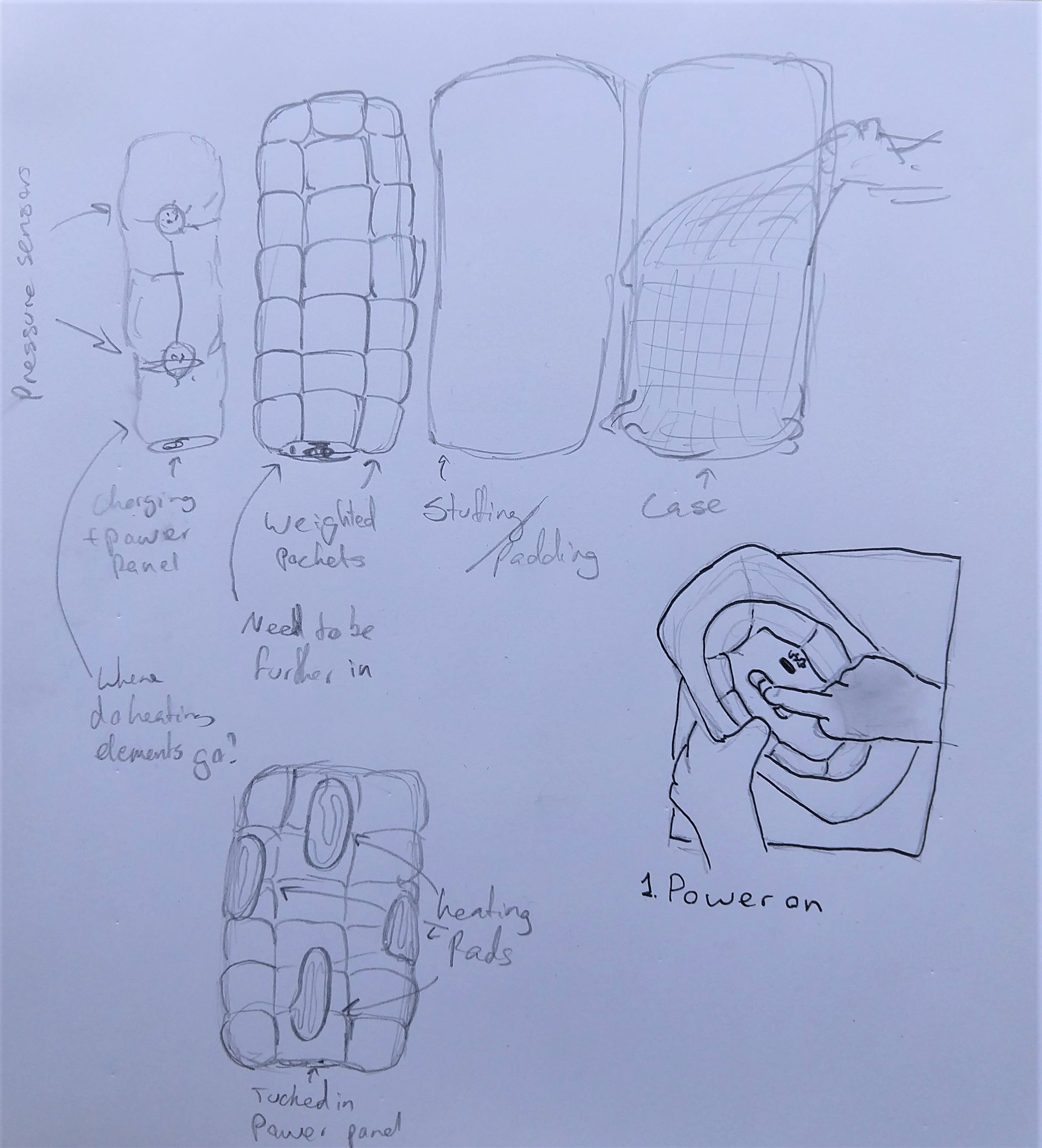
Sketches exploring heating and weight
Accomadating Variety of Users and Their Needs with One Product
Speaking to parents and reading up about Autism showed me it isn’t possible to design the pillow to accommodate multiple users needs as everyone had different sensory needs.
Therefore I introduced an app to allow me to control the temperature, sound and vibration of the sensory pillow.
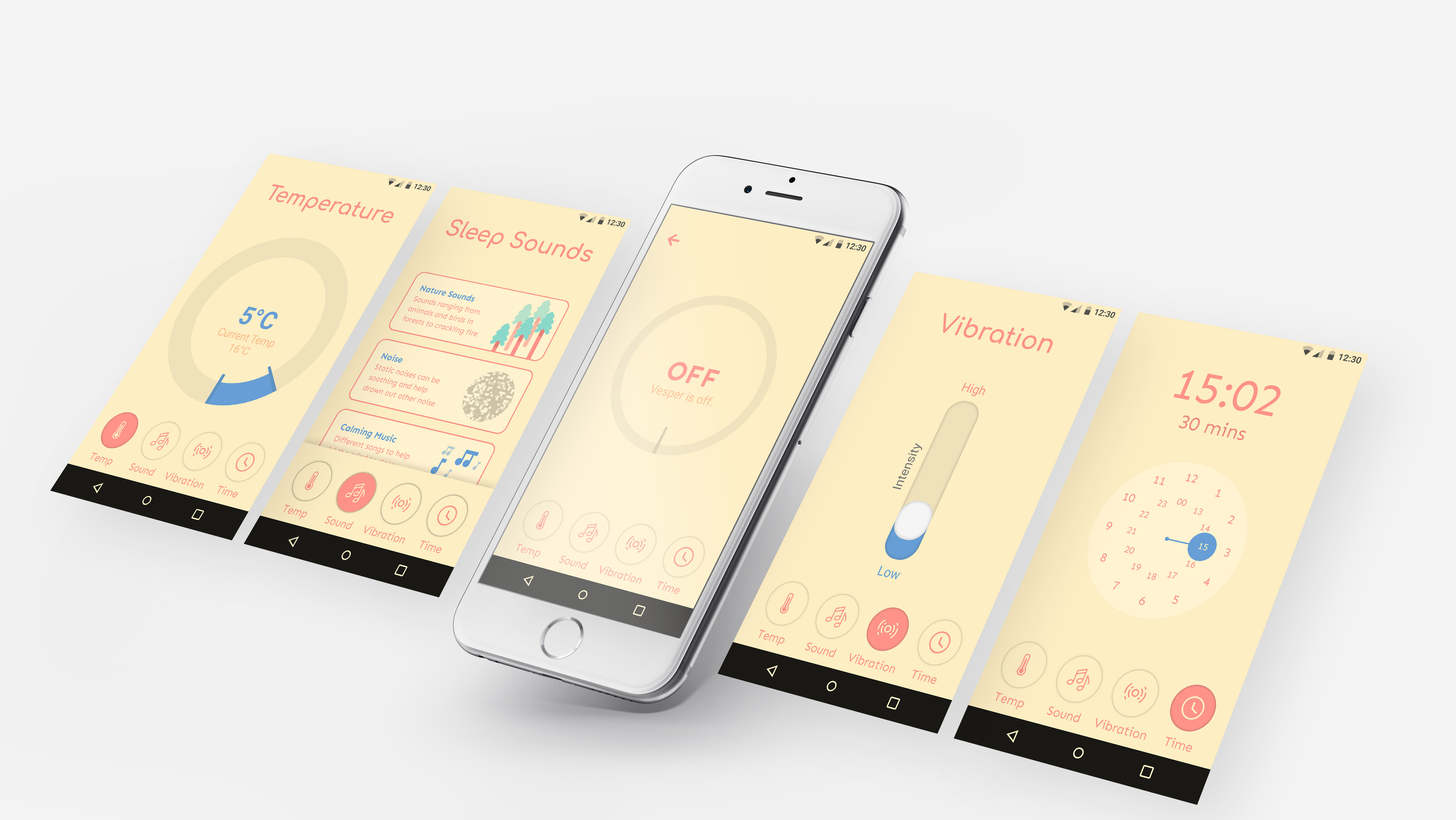
Temperature, Sound, Vibration and Activation screens
Making The App A Part of The Joyful Vesper Experience
Expanded the app to create a bonding experience between the parent and the child during setup while explaining how the app functions.

Creating a meaningful experience during Vesper setup

Final illustration and creation of prototype
Outcomes and Lessons
Testing The Final Prototype and The Outcome
Mid-fidelity prototype, vibrated, warmed up and played any audio sounds, all tech was encased in soft padding and took up sowing to create a cover for the product prototype.
Testing results showed that sensory experiences were positive and if there was anything the child didn’t like it can be adjusted the next night.

Vesper Product Blueprint
Lessons and Future Improvements
Families are not restricted to 1 parent and 1 child therefore the app would need to accommodate all possible users in the household.
Following that I learned that often a notification to the child is not enough to facilitate them to go to bed, nor is the thought of Vesper turning off if they do not.
I would have liked to look into notifying both parents and encourage a discussion to establish who will put the children to bed.
